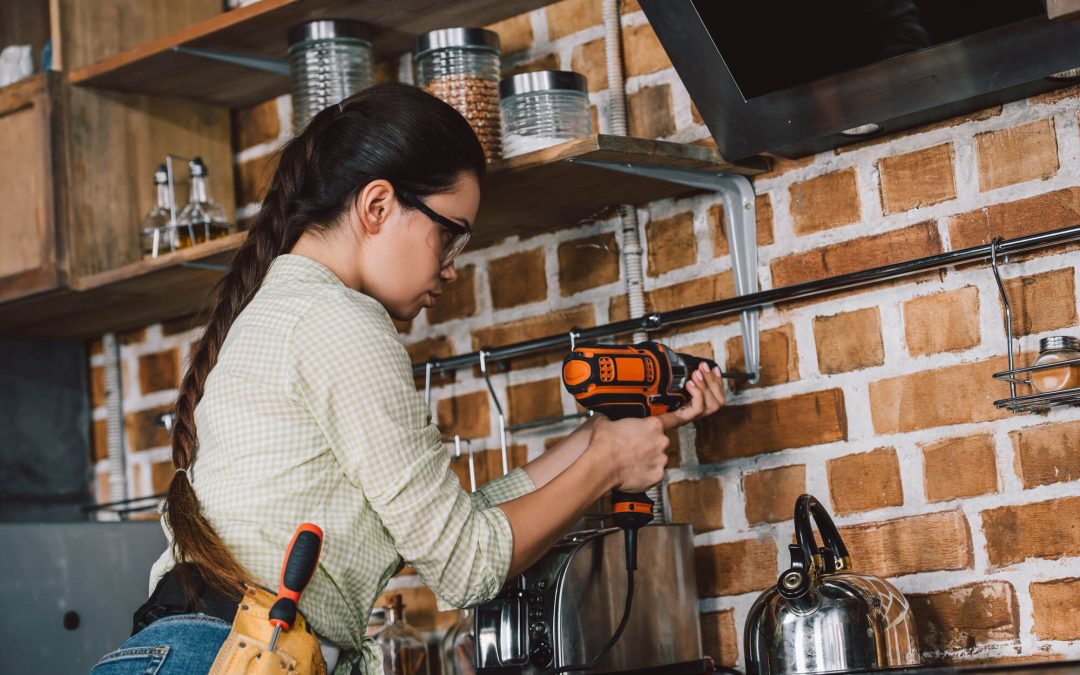In an age of Pinterest boards and YouTube tutorials, do-it-yourself (DIY) projects have become increasingly popular. Whether renovating a room, building furniture, or crafting homemade gifts, engaging in DIY endeavors is rewarding and fulfilling. However, while creating something new, don’t overlook safety precautions. If not careful, DIY projects can pose various risks to your health and safety. By following essential safety precautions for DIY projects, you can protect yourself, your loved ones, and your property from harm.
1. Safety Precautions for DIY Projects: Educate Yourself
Before diving into any DIY project, take the time to thoroughly research and understand the task at hand. Read instructional guides, watch tutorial videos, and familiarize yourself with the tools and materials required. Understanding the project’s complexities and potential hazards is the first step toward ensuring a safe working environment.
2. Wear Proper Protective Gear
Personal protective equipment (PPE) is your first line of defense against injuries. Depending on the nature of your project, this may include safety goggles, gloves, hearing protection, respirators, and sturdy footwear. Don’t compromise on safety gear, as it can significantly reduce the risk of accidents and injuries.
3. Use the Right Tools
Using inappropriate or damaged tools can increase the likelihood of accidents. Always use tools suitable for the task and in good working condition. Inspect your tools regularly for signs of wear and tear, and replace or repair them as needed. Using the right tools enhances efficiency and minimizes the risk of mishaps.
4. Precautions for DIY Projects: Work in a Well-Ventilated Area
Many DIY projects involve paints, solvents, adhesives, and other potentially hazardous substances. Ensure adequate ventilation in your workspace to prevent the buildup of fumes and airborne particles. If working indoors, open windows and doors, or consider using fans and exhaust systems to maintain good air quality.
5. Keep Work Areas Clean and Organized
Cluttered workspaces can lead to accidents and injuries. Keep your work area tidy by storing tools, materials, and equipment properly when not in use. Clear away debris and obstructions from walkways and work surfaces to prevent tripping hazards. A clean and organized workspace promotes efficiency and safety.
6. Follow Instructions Carefully
Whether it’s assembling furniture or operating power tools, always follow manufacturer instructions and safety guidelines meticulously. Pay attention to warning labels, recommended usage procedures, and safety precautions outlined in product manuals. Ignoring instructions or taking shortcuts can result in accidents with serious consequences.
7. Practice Electrical Safety Precautions for DIY Projects
When working with electrical tools or appliances, prioritize electrical safety. Unplug devices before making adjustments or repairs, and never overload power outlets or extension cords. Inspect cords and plugs for damage and replace them if necessary. If you’re not confident in your electrical skills, seek assistance from a qualified professional.
8. Take Breaks and Stay Hydrated
DIY projects can be physically demanding, especially if they involve prolonged standing, lifting, or repetitive motions. Take regular breaks to rest and rehydrate, especially in hot or humid conditions. Listen to your body’s signals and avoid pushing yourself beyond your limits to prevent fatigue-related accidents.
9. Secure Heavy Objects
When handling heavy or bulky items, take precautions to prevent them from tipping over or falling. Use proper lifting techniques, such as bending your knees and keeping your back straight, to avoid strain injuries. Secure objects securely to workbenches or scaffolding to prevent accidental movement or collapse.
10. Safety Precautions for DIY Projects: Know When to Seek Help
Despite your efforts to stay safe, some projects may require professional expertise or specialized equipment. Don’t hesitate to seek help or advice from experienced professionals if you encounter tasks beyond your skill level. It’s better to ask for assistance than to risk injury or damage to yourself or your property.
DIY projects can be enjoyable and fulfilling, but they also require careful attention to safety. By following these essential precautions, you can minimize the risk of accidents and injuries while maximizing the success and satisfaction of your DIY endeavors. Safety should always be your top priority, so don’t take shortcuts or overlook potential hazards. With the right mindset and preparation, you can create beautiful and functional projects while keeping yourself and others safe.
DIY Project FAQs
How do I budget for DIY projects?
Determine the cost of materials and tools needed for the project and factor in any additional expenses such as permits or specialized equipment rental. Research prices and consider alternatives to stay within your budget.
Where can I find resources for learning new DIY skills?
Explore workshops, classes, and online tutorials offered by home improvement stores, community centers, and educational websites. Practice new skills on smaller projects before tackling larger ones.
How can I choose the right DIY project for my skill level?
Consider your previous experience, available tools, and the project’s complexity. Start with simple tasks and gradually advance to more challenging ones as you gain confidence and skills.
What are some common mistakes to avoid in DIY projects?
Common mistakes include not measuring accurately, rushing through steps, neglecting safety precautions, and not properly planning the project. Take your time, follow instructions closely, and seek advice if needed.
Horizon Inspection Services provides professional home inspections to customers in Arizona. Contact us to request our services.
